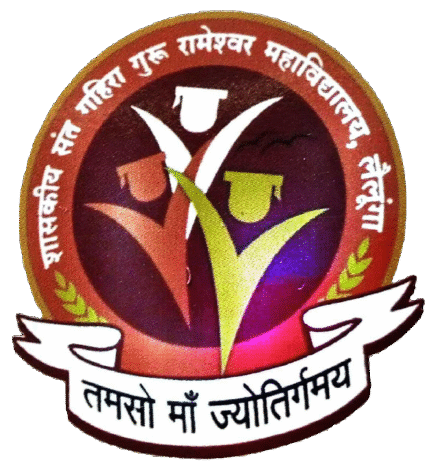 HOD– RAKESH SINGH SIDAR
HOD– RAKESH SINGH SIDAR
QUALIFICATION– M.Sc.,CGSET
DESIGNATION– Asst. Professor
Course: course
nuclear chemistry is a part of our course curriculum and has been
introduced with an objective to present a vignette of the nuclear
structure, it’s stability and induce the students to take up nuclear
research in there higher studies.
There are lots of
scope opportunity, research and development in this subject, since a
lot still remains unexplored in this arena
B.sc. part 1
Paper – 1 ( inorganic chemistry)
Unit 1- To study atomic structure and periodic property to explain
the chemical behavior …
Unit 2- To discuss chemical bonding, valence bond theory and shape
of some inorganic molecules…
Unit 3- To study chemical bonding and ionic structure…
Unit 4- comparative study and features of s block & p block
elements…
Unit 5- To study chemical properties of noble gases and inorganic
chemical analysis….
Paper – 2 nd { orgenic chemistry}
Unit 1 – To study electronic structure and binding of organic
reactions.
Unit 2 – To discuss stereochemistry of of organic compounds.
Unit 3 – To study aliphatic and aromatic ring components of
cyclonlkanes.
Unit 4 – Discuss the mechanism of alkanes, dienes, and alkynes.
Unit 5 – To study aromatic hydrocarbons, Huckle rule and
substitution reactions.
Paper – 3rd { Physical chemistry }
Unit 1 – To study the Mathematical Concept, Permutation &
Combination & Probability
Unit 2 – Discuss the gaseous state and molecular velocities of
gaseous moleculars
Unit 3 – To study
the liquid state, properties and colloquials and surface chemistry
Unit 4 – Discuss
solid state chemistry and X – ray diffraction.
Unit 5 – study the
chemical kinetics Arrhenius theory & eatalysis
Learning
Outcomes: After completing the course the student will be expected
to be able to:
* Understand
chemical bonding in compound and ionic structure.
* Understand the
concept of saturation, unsaturation and aromaticity.
* Solve
mathematical calculation applied in chemistry.
* Apply integrated
rate equations to solve for the concentration of chemical species
during reaction of different order, recall, manipulate and properly
employ Arrhenius low, plot equations and functions representating
kinetic behaviour of chemical systems, explain potential energy
surface.
* Solve the
problems in solid, liquid and colloidal state.
B.sc part 2
Paper 1st { Inorganic chemistry }
Unit 1 – Discuss
the chemistry of elements of transition series.
Unit 2 – Study the
oxidation & reduction and coordination compounds
Unit 3 – To study
coordination chemistry.
Unit 4 – Study of
chemistry of lanthanide elements.
Unit 5 – Study the
acid and bases.
Paper – 2 nd { Organic chemistry }
Unit 1 – To study
chemistry of organic halides.
Unit 2 – To study
alcohols, phenols & ether.
Unit 3 – To study
of aldehyde & Ketone.
Unit 4 – To discuss
the carboxylic acid and it’s derivatives.
Unit 5 – To discuss
the organic compounds of nitrogen
Paper – 3rd { Physical chemistry}
Unit 1 – to stuy
fundamentals of thermodynamics system and surroundings and
thermochemistry.
Unit 2 – To study
change in entropy of different processes through thermodynamics.
Unit 3 – To discuss
chemical and ionic equilibrium.
Unit 4 – To study
phase rule, phase component & nernst distribution low
Unit 5 – To study
about the theories and principles of photochemical reactions {
photochemistry }
Learning Outcomes:
After completing the course the student will be expected to be to:
* Student should
learn the synthesis, structures, bonding and reactivity of
lanthanides and actinides element. Industrial application as well as
medicinal importance of these components will also be discussed.
* Be also to
identify and rationalize type of redox reaction with suitable
mechanism. Able to do some quantitative analysis.
* Able to discuss
the concept of entropy in different thermodynamics system and
chemical & ionic equilibrium in solution and gas phase.
B.sc part 3
Paper 1st { Inorganic chemistry }
Unit 1 – To study
metal – ligend bonding in translation metal complexes and
thermodynamics & kinetics aspects of transition metal complexes.
Unit – 2 To
discuss magnetic properties and electronic spectra of transition
metal complexes
Unit – 3. To study
nomenclature, classification, preparation and bonding in
organometallic compounds.
Unit – 4 To study
bioinorganic chemistry essential and trace in biological processes.
Unit – 5 To study
hard and soft acids and bases concept in chemistry.
Paper 2nd { organic chemistry }
Unit – 1 To study
organometallic & organolithium, organo sulphur compounds.
Discussion on organic synthesis via enolates formation.
Unit – 2 To study
biomolecules classification and there constitutions.
Unit – 3 To study
synthetic polymers and systhesis dyes.
Unit – 4 To
discuss principles and applications of mass UV- visible and IR
spectroscopy.
Unit – 5 To study
NMR and 13 CMR spectroscopy and applications in MRI { introductions
}.
Paper 3rd { physical chemistry }
Unit – 1 To study
Quantum mechanics.
Unit – 2 To
discuss Quantum mechanics approach of molecular orbit theory.
Unit – 3 To study
electromagnetic radiation, vibration and Raman spectra.
Unit – 4 To study
electronic spectra of diatomic molecules and photochemistry.
Unit – 5 To
study principles and applications of thermodynamics. Physical
properties and molecular structure and magnetic properties of solid.
Learning Outcomes:
After completing the course the student will be expected to be able
to:
* Apply NMR, IR, MS,
UV, -Vis spectroscopic techniques in solving structure of organic
molecules and in determination of their stereochemistry, explain the
spectral transitions.
* Determine bond
length from rotational spectral data, identify functional group in
vibration spectra interpret the above spectroscopic data of unknown
compounds and determine the nature of proton and determine number of
equipment proton in a molecule from proton NMR spectra.
* Explain the use
the central concepts, theoretical description, and fundamental
approximation applied to atoms.
* Treat the quantum
mechanical formulism for identical particles and apply these to the
structure of atoms, explain fundamentals of photochemistry and the
lows governing it, explain Jablonski diagram and describe and non –
radiation transition.
